We’ve all been at a nice restaurant and seen a waiter or Sommelier trot past us with an elaborate, glass contraption to decant an expensive bottle of wine for a patron. But is the process of decanting all show or does it actually DO something to enhance our enjoyment of wine?
The process of decanting dates back to ancient Rome when wine was fermented in large containers called amphorae. Decanters were used to siphon wine out of amphorae to bring to the table for serving. Since an amphora generally contained a fair amount of sediment at the bottom, the decanting vessel also served to separate the wine from the sediment which, although it poses no health risk, is not very desirable to drink.

An ancient terra cotta wine decanter
Over the years, decanters have been made of various materials including silver, bronze, gold and terra cotta earthenware. During the Renaissance, the Venetians introduced the style of decanter we are most familiar with today. It is typically made of glass and features a thin neck which expands into a broader base which maximizes the wine’s oxygen exposure.

Decanters come in a variety of shapes & sizes
Today, a decanter serves two primary purposes: (1) to separate older wines, usually red wines or Port, from any sediment at the bottom of a bottle which occurs naturally as wines age, and (2) to aerate younger wines, both white and red, which tames their tannin and helps them “open up,” and become more expressive and approachable.
While most tannic, young red wines such as Cabernet Sauvignon, Cabernet Franc, Syrah, Nebbiolo, Sangiovese, Malbec, and Merlot will benefit from decanting, older wines can be more fragile. In fact, it’s a good idea to taste an older wine (10-15+ years old) before making the decision to decant. If you like the way it tastes right out of the bottle, you may want to avoid the decanting process altogether. If the wine is very “closed” or unexpressive and/or contains a significant amount of sediment, then you will probably want to proceed with decanting it.

The Vinturi Wine Aerator is a perfect for nights you only want a glass or two!
The process of decanting is quite easy to perform and you don’t need a fancy decanter to do it – a big glass vase or water pitcher will work just fine! Also, if you only plan on enjoying a glass or two, the Vinturi Wine Aerator is also great choice at a great price. If you would like to go ahead and decant a bottle yourself, just follow the steps below but be sure to take note, decanting a young bottle is different from decanting an older bottle:
1.) If the wine(s) you want to decant are stored on their side in a cellar or wine fridge, be sure to stand the bottle(s) upright for 24-48 hours prior to decanting. This allows the sediment suspended in the liquid to settle to the bottle of the bottle.
2.) Select the decanter (or glass vase or pitcher!) you’d like to use and make sure it is properly cleaned and dried. If you’re thinking of investing in a decanter, we really like the Riedel Duck Decanter. We’ve had ours for over 12 years and it does a fabulous job and is easy to clean too.

Riedel’s Duck Decanter – one of our favorites!
3.) Remove the capsule and cork from the bottle of wine and wipe any dust or schmutz from the neck and top of the bottle.
4.) If you’re decanting a young bottle of wine (under 5 yrs), invert the opened bottle of wine over the decanting vessel and let it flow freely into the decanter. The more “sloshy” this process is, the better (without spilling the wine of course). Young wines really benefit from that infusion of oxygen! As for timing, you can decant young tannic wines up to 2-3 hours before serving, however, if you’d like to experience more of the wine’s natural evolution in the glass (as I like to do) you can decant it just before serving.
5.) If you’re decanting an older bottle of wine (10+ yrs), place a candle or the light from your iPhone under the neck of the bottle as you slowly and steadily pour the wine in one continuous stream from the bottle into the decanter. Once you begin to see sediment approach or enter the neck of the bottle – slow your flow or stop pouring altogether depending on how much there is. You don’t want any sediment getting into your freshly decanted wine!
6.) Once you’ve poured the wine into the decanter, discard the bottle and any dredges at the bottom and enjoy your decanted wine!

You can even use a Vinturi aerator WITH a decanter!
Other twists on decanting:
– For especially youthful, tannic red wines you can “double-decant” them by pouring the wine into a decanter and then right back into the bottle – double the decanting, double the fun!
– If you’re feeling adventurous, you can also “hyperdecant” your wine (young red wines ONLY!) utilizing a technique introduced in the revolutionary Modernist Cuisine cookbooks. Simply empty the bottle of the wine into a blender and blitz for 30-60 seconds. Wait a minute or two for the foam to subside and enjoy!
– In order to expedite decanting, you can combine a Vinturi Wine Aerator with a decanter and pour the wine through the device into the glass decanter in order to speed things up.
I hope you enjoyed our latest Wine Word of the Week and if you have any “wine words” you’d like to learn more about, please feel free to share them in the Comments section below. To see previous installments of this segment, please click here and, as always, thanks for reading!
Cheers,
![]()
The post Wine Word of the Week: Decanting appeared first on The Glamorous Gourmet.
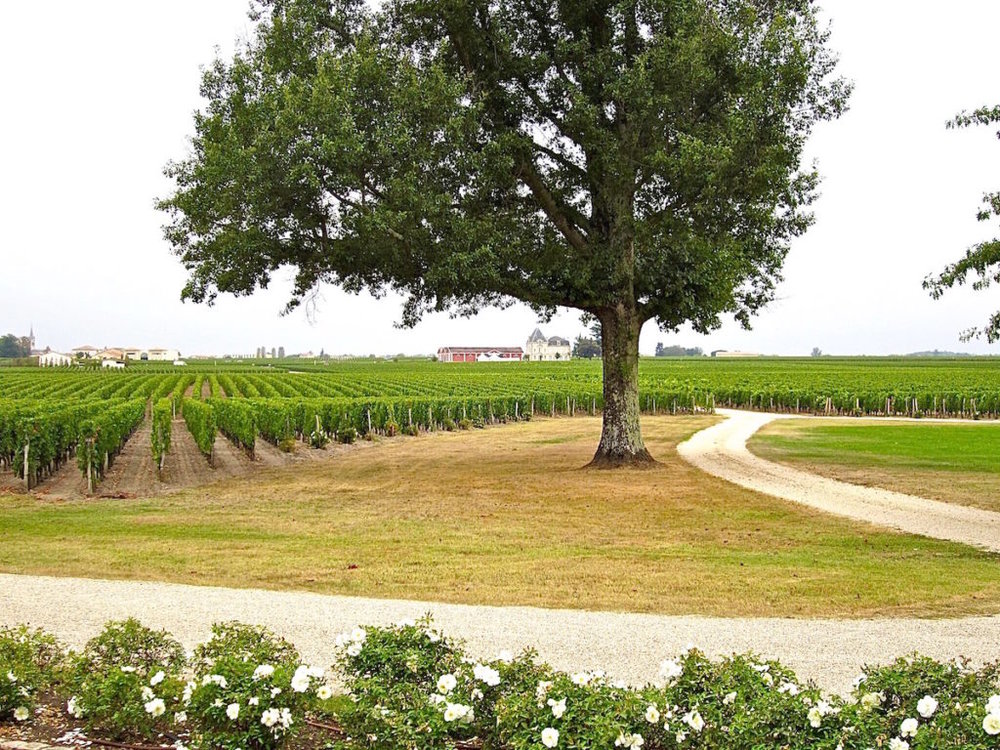
Fans of the movie Sideways, the wine-drenched 2004 film following the debaucherous adventures of friends, Jack and Miles, in California wine country, will probably recall Miles' disdain for one grape in particular...Merlot. His obvious, ahem, revulsion at the mere mention of it is really quite hilarious - click here to view but be warned, there's a smidge of profanity!
The irony in the film, however, is that Miles' most treasured bottle in his wine collection is a 1961 Château Cheval Blanc, a highly coveted, collectible bottle made of mostly...wait for it...MERLOT! Perhaps the wine's status as one of the most revered Bordeaux wines in existence made it possible for him to overcome his Merlot-phobia?
It's hard to say, but thoughts of the film had us smiling as we eased into the gravel drive of Château Cheval Blanc on a hauntingly beautiful, overcast September day.
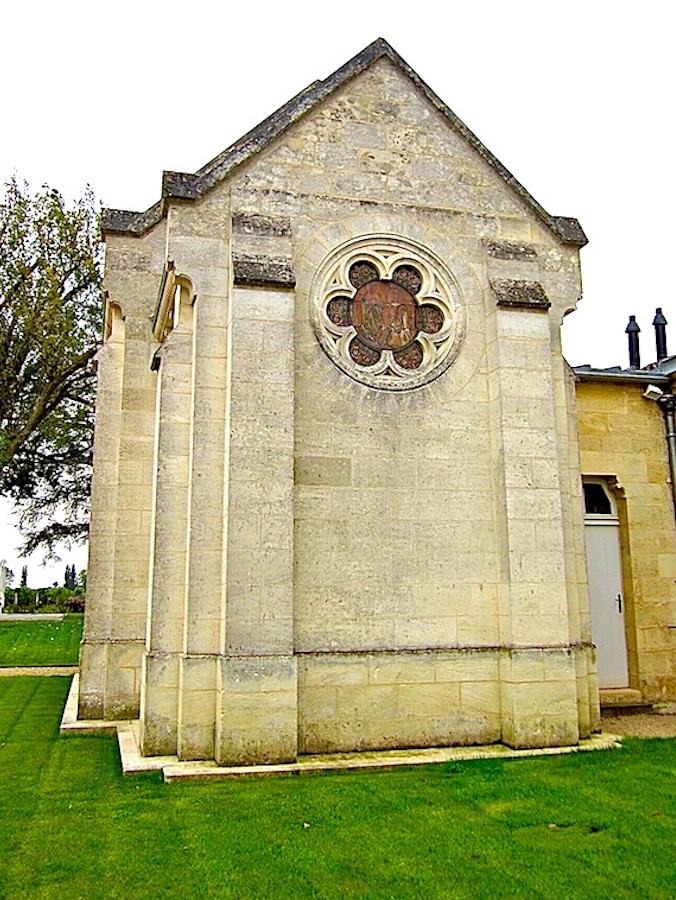

Located in rural Saint-Émilion among the lush greenery of Bordeaux's Right Bank, we were looking forward to visiting this revered estate whose terroir has been highly regarded since the 15th century. The estate currently produces two wines, the eponymous Château Cheval Blanc as well as a second wine, La Petit Cheval, which made its debut in the 1988 vintage.
In addition to its wines, the Château had also recently completed a major renovation which we were also very eager to experience. But first, a little vinous history.
Since the Saint-Émilion classification system's inception in 1954, Cheval Blanc has been categorized as a Premier Cru Classe A, the system's highest level. The Chateau shares this distinction with only three other producers: Château Ausone, Château Pavie and Château Angélus. While Cheval Blanc and Ausone have been exclusive members of this prestigious classification since the beginning, the 2012 update added Chateaux Pavie and Angélus.
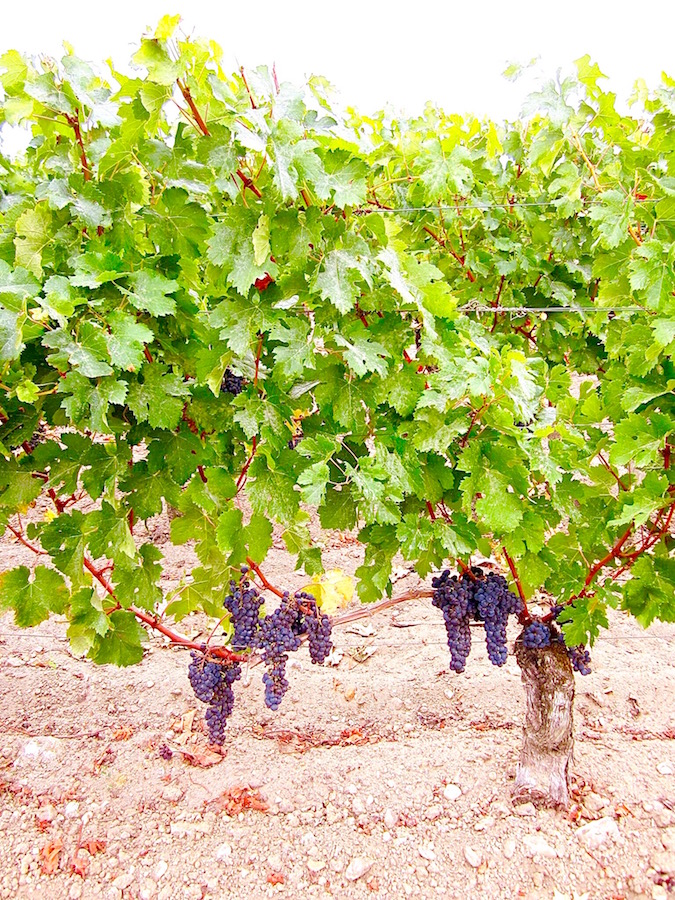
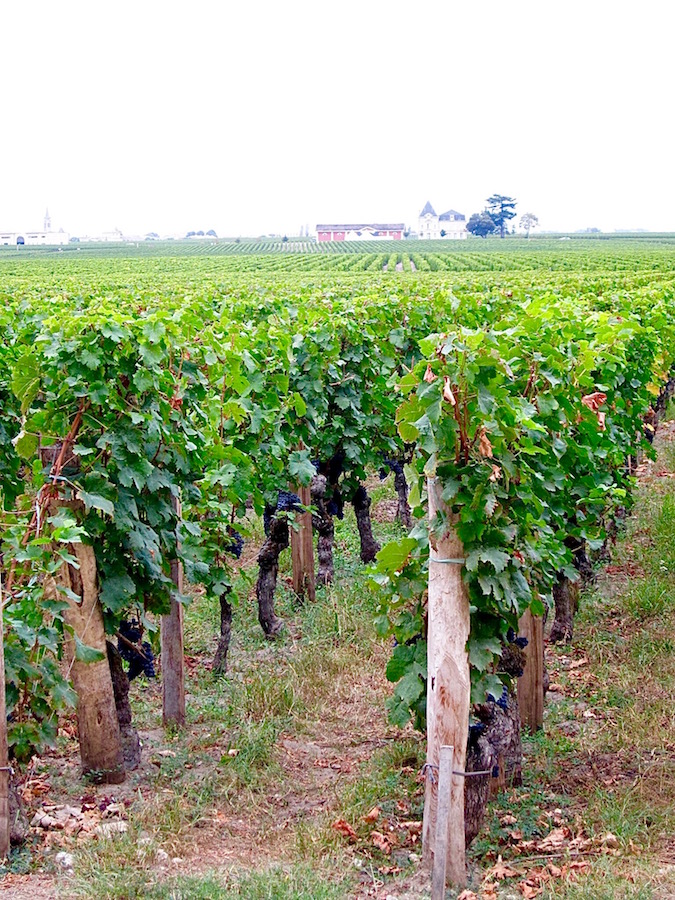
The property now known as Château Cheval Blanc, French for "white horse," was once part of a larger, 200-hectare estate known as Château Figeac. While vines have been grown here for centuries, it wasn't until Jean-Jacques Ducasse purchased a portion of the estate in 1832, that the core of what many would consider the finest Chateau in all of Bordeaux was formed. Over the next 20 years, the family continued to add land to estate until it reached 39 hectares which is where it still stands today.
When Jean-Jacques' daughter Henriette married Jean Laussac-Fourcaud, a Libourne wine merchant, a new chapter in the evolution of Château Cheval Blanc began. In the 1860's, Laussac-Fourcaud's keen intuition led him to replant the vineyards to half Merlot and half Cabernet Franc, the two grapes which, to this day, thrive on Bordeaux's Right Bank.
He also realized the importance of water stress in order to produce the finest grapes possible. Formerly known as vin de Figeac, the wine was first sold under the Cheval Blanc name in 1852.
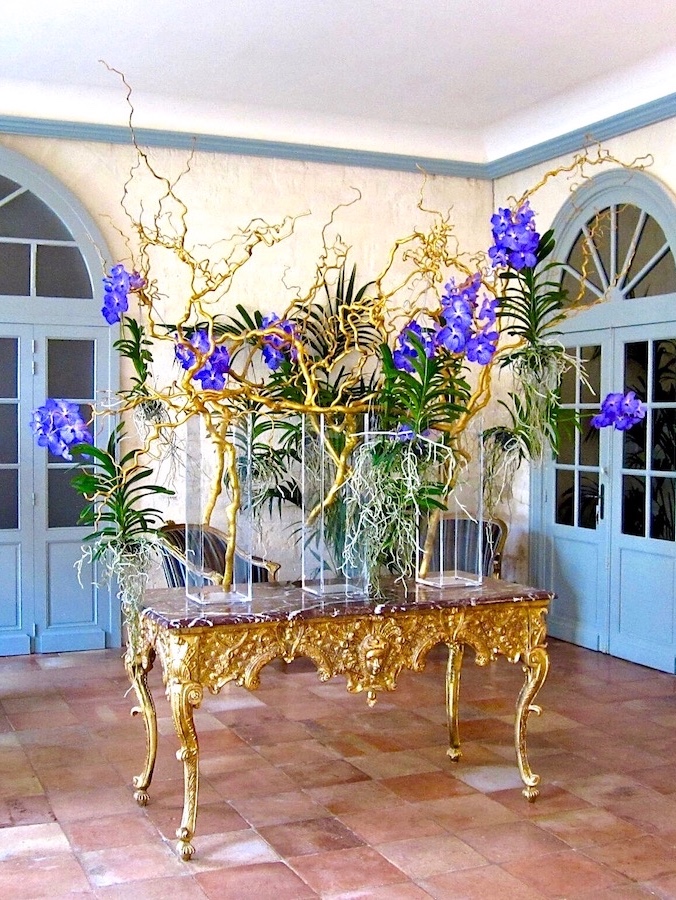
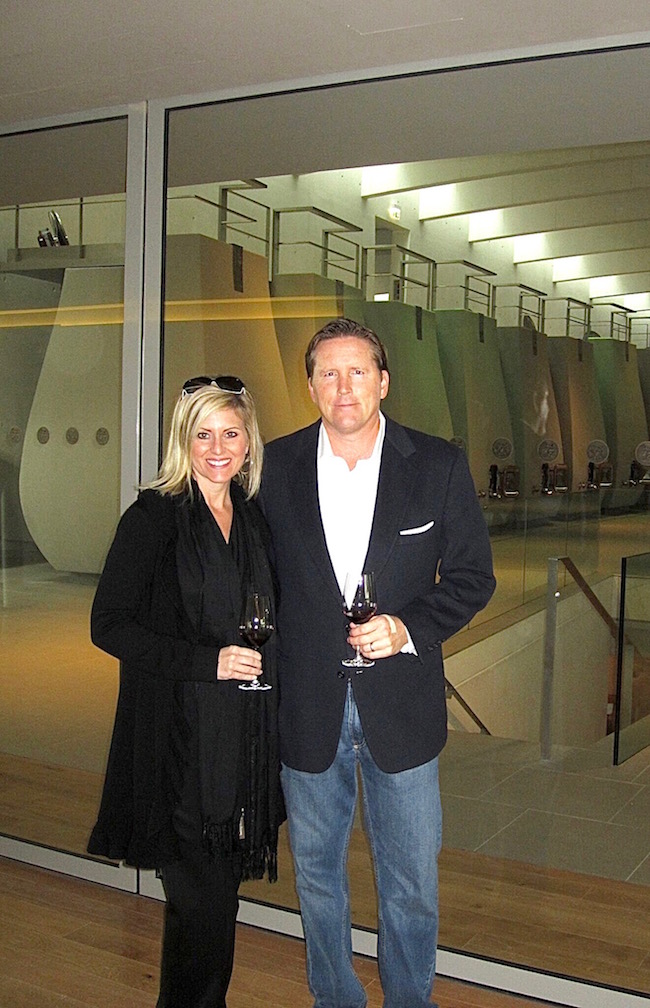
For thirty years, Jean Laussac-Fourcaud dedicated himself to one thing only, making the wines of Château Cheval Blanc the best in Saint-Émilion! His hard work paid off and his wines won many awards over the years and developed a reputation of excellence.
In the 1880's Cheval Blanc was even considered on par with the finest wines of the Médoc, garnering similar prices as wines from the famed Chateaux Margaux, Latour, Lafite and Haut-Brion. Once Jean Laussac-Fourcaud passed away, his son Albert inherited the Chateau and perpetuated the work of his father and made even more improvements in the vineyard. By the time Albert's two sons, Jacques and Joseph, inherited the estate, they too followed in the footsteps of their father and grandfather before them.
Over the ensuing decades, acknowledgements of excellence continued to solidify the family's legacy including the aforementioned appointment in the Saint-Emilion Classification system as Premier Grand Cru Classé "A." This exalted rank was perpetuated in each following classification update and Cheval Blanc became a member of the exclusive "Club of 9" comprising the first growths of Bordeaux. Perhaps cellarmaster of Cheval Blanc for 44 years, Gaston Vaissière, summed it up best when he deemed the vineyards' terroir "magical."
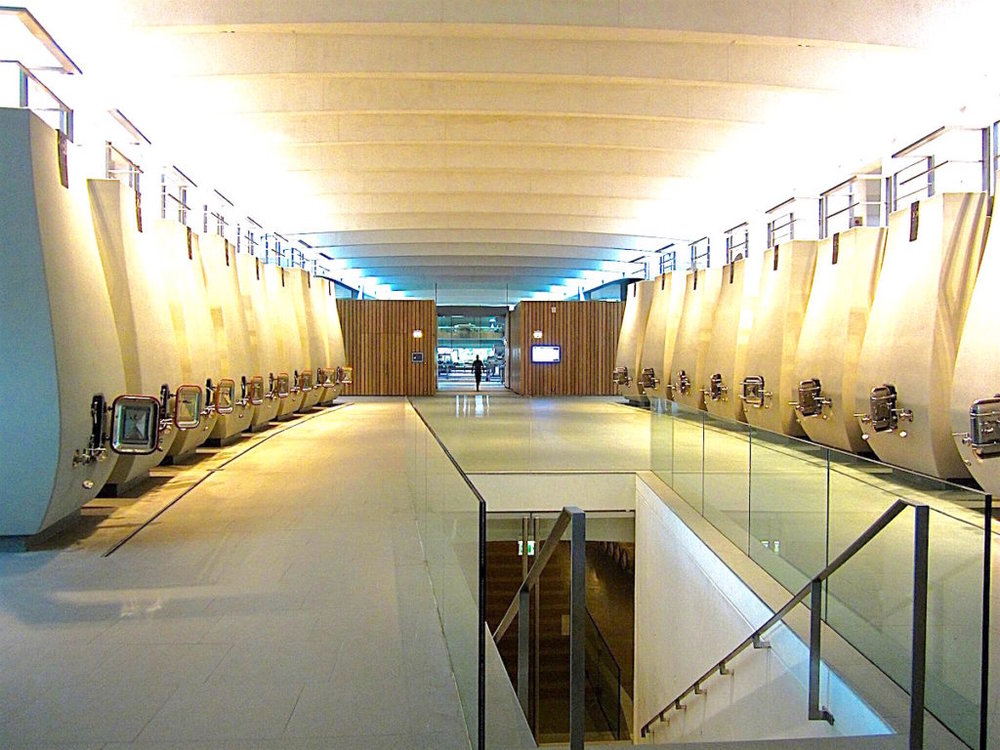
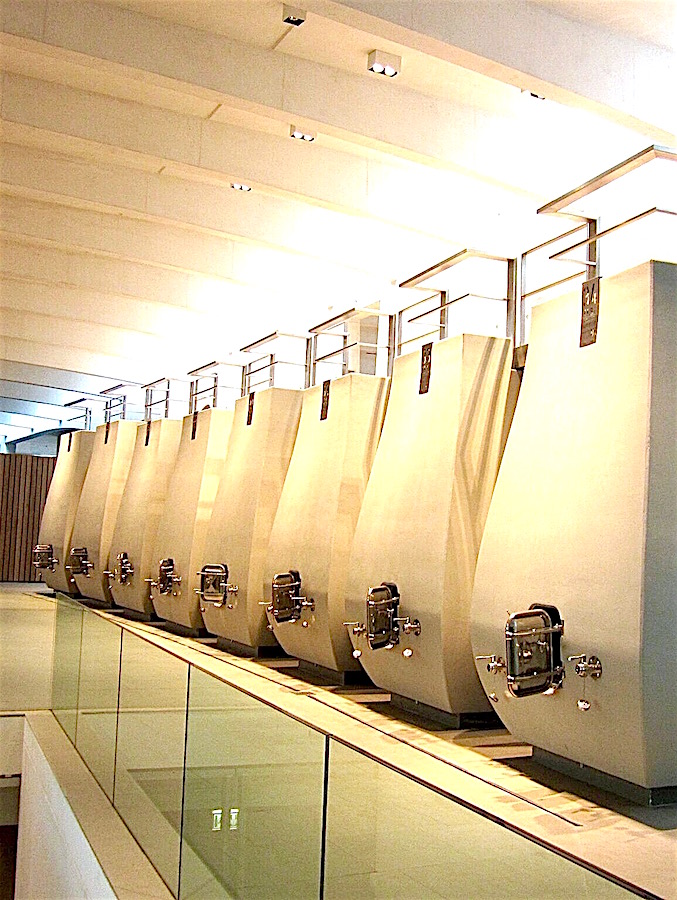
The priority today continues to be producing wines of the utmost quality, which calls for enormous attention to detail and winemaking precision.

Another important chapter of the Cheval Blanc story commenced in the Autumn of 1998 when Bernard Arnault and Baron Albert Frère, old friends and lovers of great wine, joined forces to purchase the fabled château.
They brought on Pierre Lurton as Estate Manager and injected a dynamic new spirit into the Château while maintaining the utmost reverence and respect for its history. They also placed their complete trust in the winemaking team to continue their wonderful work. The priority today continues to be producing wines of the utmost quality, which calls for enormous attention to detail and winemaking precision.
With a vision towards the future, the duo embarked on the addition of a new, state-of-the-art cellar adjacent to the Château. The impressively modern structure was designed by Christian de Portzamparc, winner of the Pritzker Architecture Prize in 1994, and was completed in June 2011. Reflecting the taste of the Château owners, the addition is both futuristic and in keeping with the surrounding historic vineyard landscape which is listed as a World Heritage Site by UNESCO.
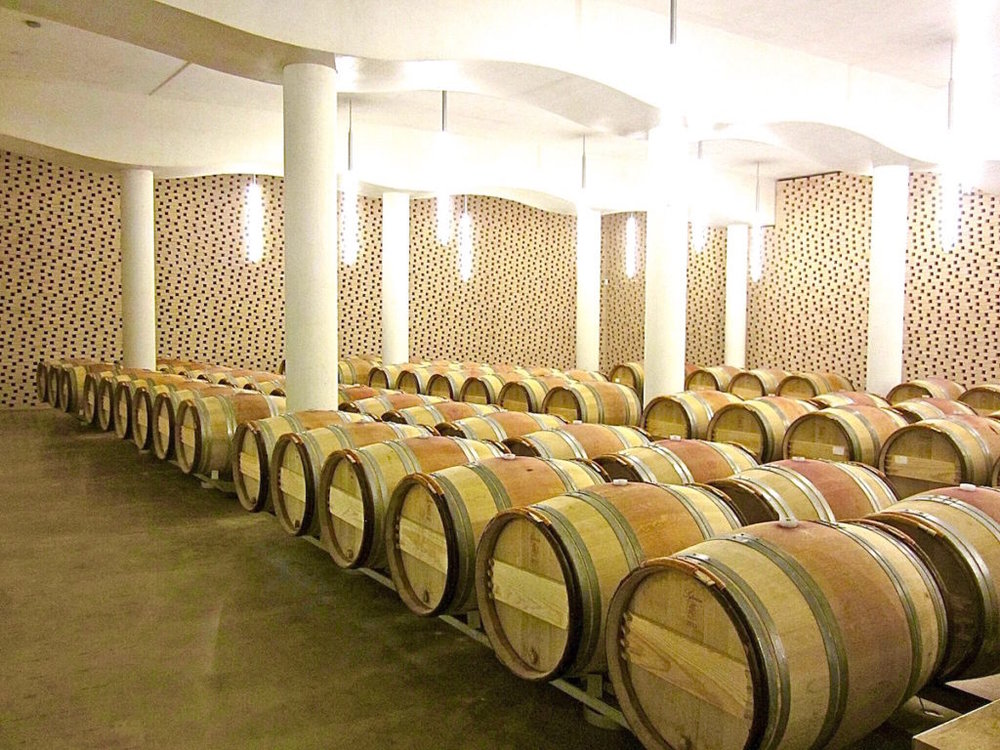
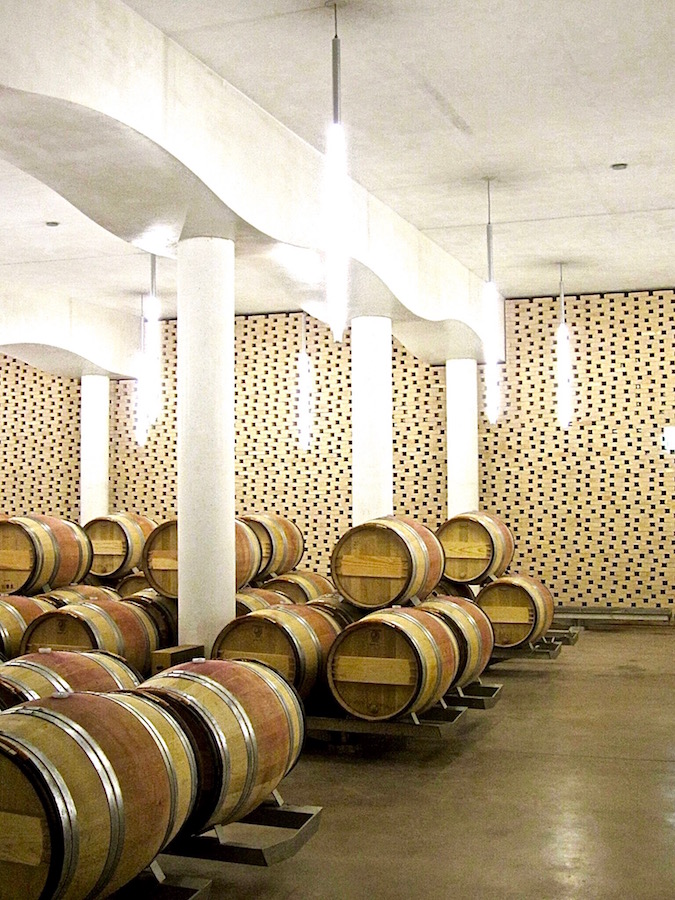
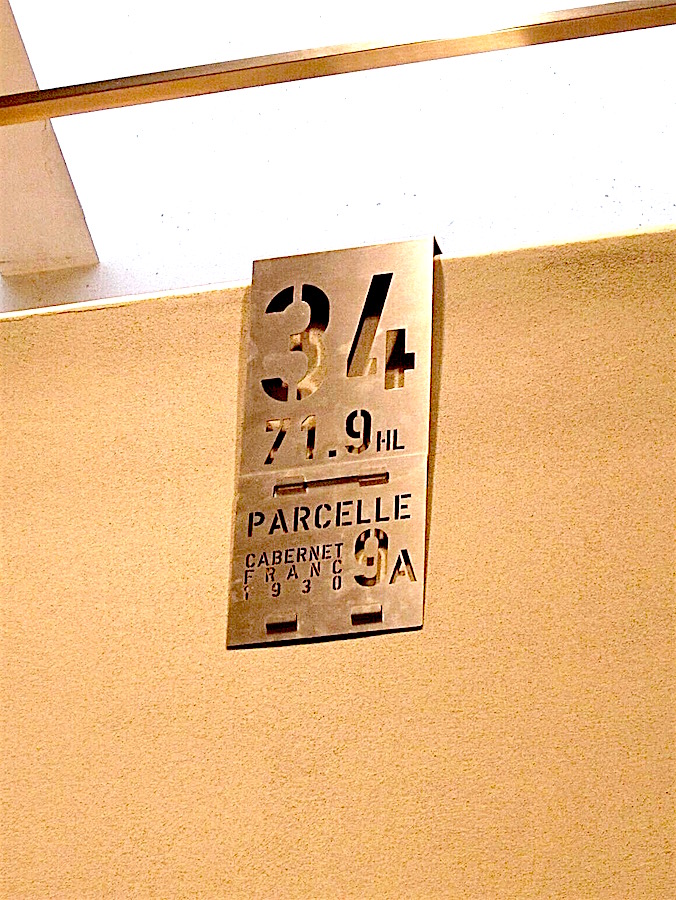
The new Cheval Blanc cellar was extremely well-received and the first structure in its category to be certified for the High Quality Environmental (HQE) standard. With its uber-stringent criteria, this certification recognizes great care taken in choosing building materials, energy conservation, waste water management as well as acoustic comfort and employee well-being.
On our tour of the new facility, we felt like we were walking on truly hallowed ground. The new cellar's intimate yet airy feel exuded elegance with its monochromatic colors and diffused natural light. One of the most striking interior vistas features six rows of curvilinear Italian concrete vats stoically flanking a walkway and stairwell down to the barrel room.
The number of vats correlates exactly with the Chateau's fifty two vineyard plots, allowing each one to be vinified separately, a very important component in the production of the Cheval Blanc wines. Each bespoke vat is individually tailored to the size of its assigned vineyard plot and labelled with its corresponding plot number, grape variety and the number of hectoliters the plot produces. The temperature of each vat is also individually controlled and monitored by a super sophisticated control panel. The integration of tech-savvy features and sophisticated aesthetics in this impressive structure was truly amazing!
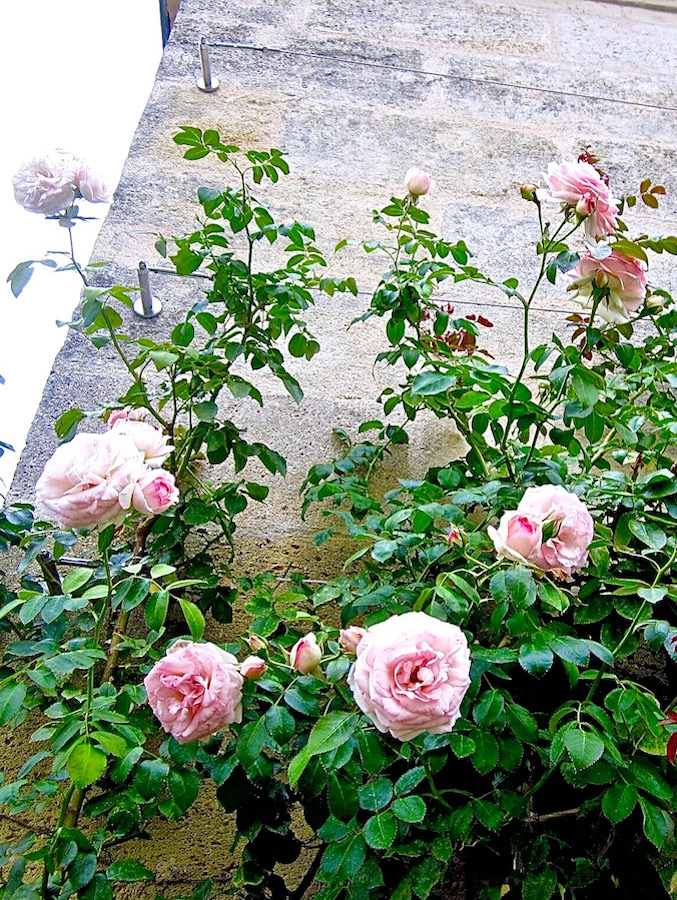
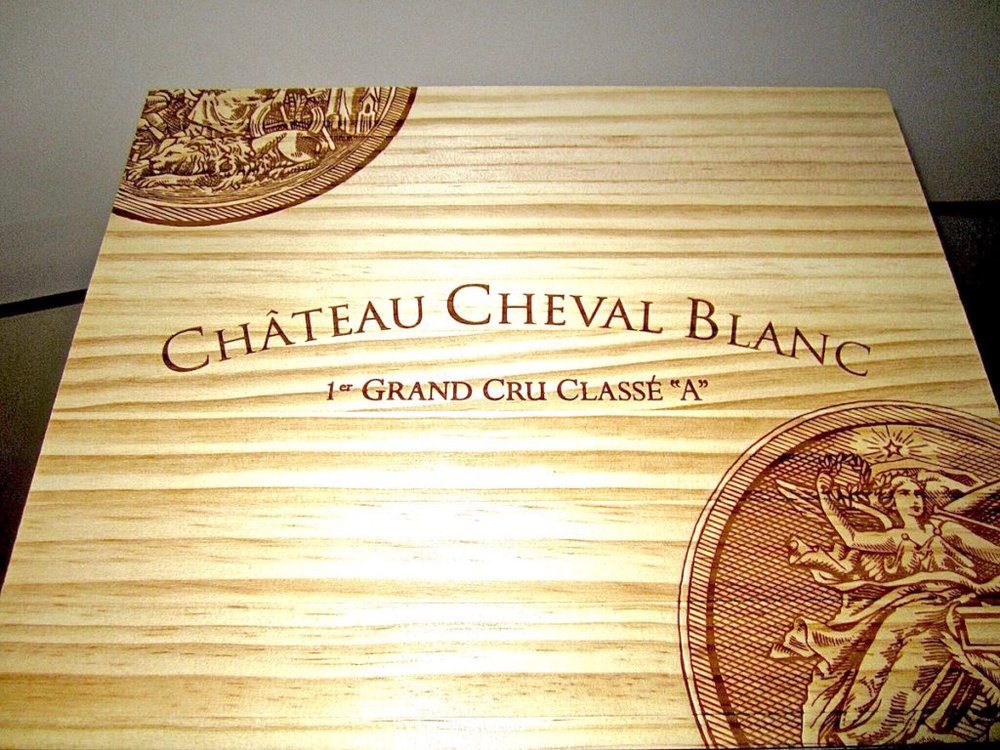
One level below the tank room was the extensive underground barrel cellar where French barriques cradled the aging wine. The artfully displayed barrels were illuminated by the soft glow of stylish, low-hanging pendant lighting. The cellar's beautiful Mashrabiya walls, inspired by traditional Arabic wooden screens, served the dual purpose of concealing machinery and equipment while facilitating ventilation. Standing amidst the barrels, the intimate, elegant space felt more like a chic hotel lobby than what you'd expect to find in a musty wine cellar.
After we toured the cellar's interior we were led up to the rooftop which featured beautiful gardens and panoramic views of the bucolic splendor surrounding the estate. The view also included the vineyards of another world renowned estate, Chateau Pétrus, which is only a stone's throw away in neighboring Pomerol. While the prestigious Chateaux and vast holdings of the Left Bank are certainly very impressive, we were truly smitten with the verdant lush greenery and relaxed charm of the Right Bank.
Finally, we toured the estate's vineyards and were able to walk among its revered vines. As we meandered down the gravel paths we were able to pluck some of the Cabernet Franc grapes straight from the vine. Since it was September just before harvest, the grapes were juicy and perfectly ripe. After we had each sampled a few of the delightful jewels, we were ushered away from the vineyard in order to avoid cutting into their profits!
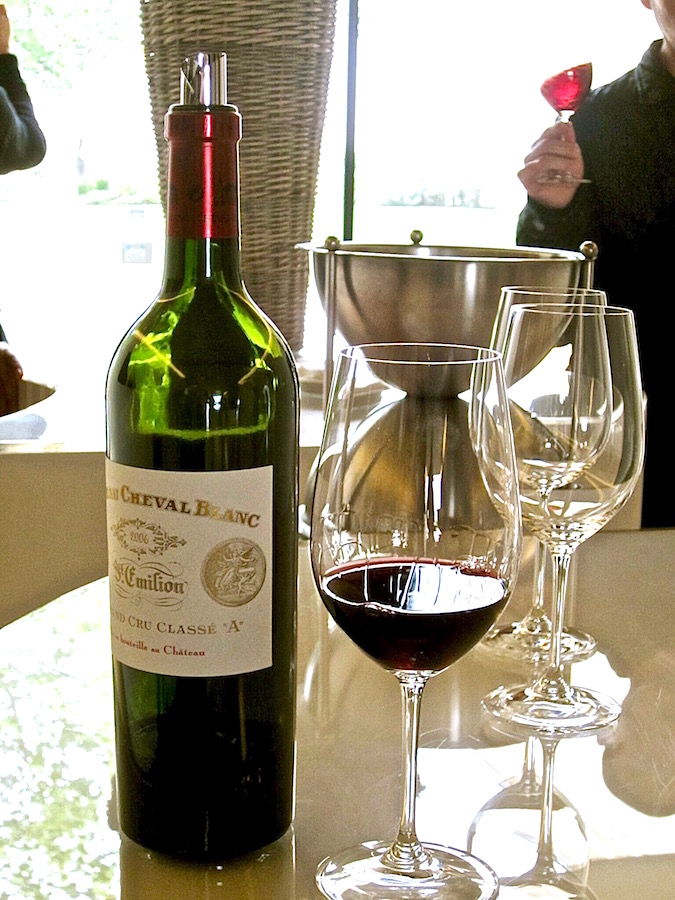
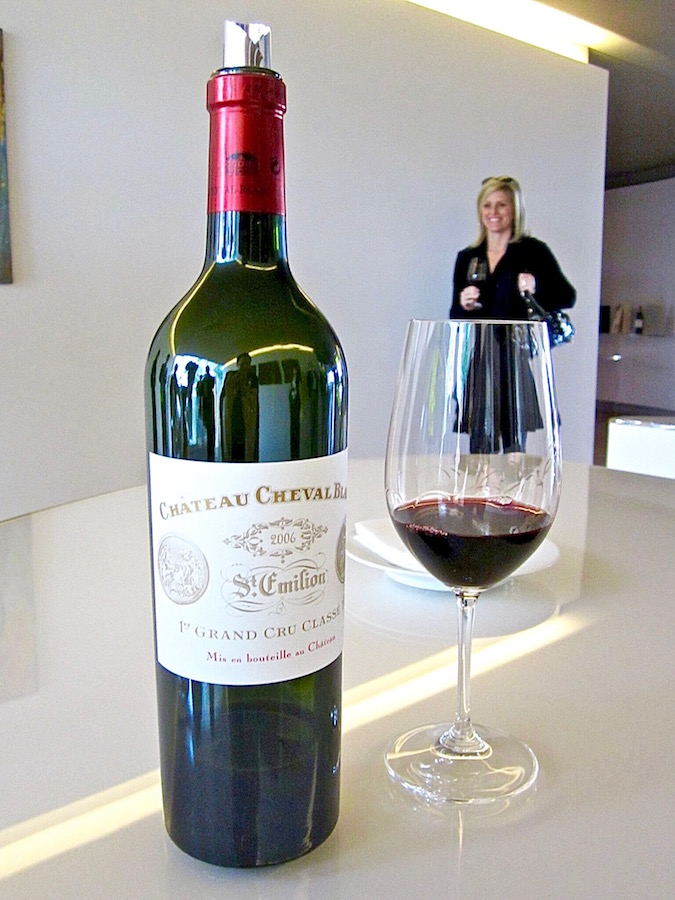
Understandably, the soil types the vines are grown in is particularly important for maintaining the character of the Cheval Blanc wines. While some estates in Saint-Emilion have excellent gravelly soil, and others have very good clay soils, Cheval Blanc is blessed with both types of soil in fairly equal proportions. Château Cheval Blanc is also one of the rare estates whose vineyard configuration has remained practically identical for nearly a century and a half, since 1871. This continuity can also to be found in the proportion of grape varieties. In 1911, the share of Cabernet Franc was also close to 50% just like it is now.
The vineyards at Château Cheval Blanc are planted to three classic Bordeaux grape varieties: 49% Cabernet Franc, 47% Merlot and 4%Cabernet Sauvignon. The average age of the vines is 42 years, but the oldest plots go back to 1920.
Replanting is done at a very slow rate – only one hectare every three years. This means that, year in and year out, the heart of Cheval Blanc's vineyard remains intact. Each vineyard plot has its own specific profile due to the age of the vines, surface area, kind of soil, type of rootstock and grape variety. As a result, the wine produced from each plot has its own unique profile. Those from clay soil are powerful with velvety tannin, while those from gravel soil are more aromatic and elegant. A blend of the two results in a wine that is both powerful and elegant with expressive aromatics as well as the complexity of Bordeaux's greatest wines.
After our fabulous tour of Château ChevalBlanc we sampled the Chateau's 2006 vintage, a blend of 54% Merlot, 45% Cabernet Franc and 1% Cabernet Sauvignon. 2006 was a year which highly favored Merlot, resulting in a wine with rich, ripe, expressive fruit which melded beautifully with the elegance of the Cabernet Franc.
The full-bodied wine was rife with layered notes of violet, cassis, cocoa, leather and cigar box which continued to evolve and mesmerize in the glass. The wine's opulence was balanced by its elegant frame and fine tannins, which demonstrated remarkable balance and poise. We took our glasses up to the rooftop garden to fully savor and indulge in the experience...right down to the very last drop.
Are you a Bordeaux fan? Why or why not and if you are, which bank do YOU prefer, Right or Left? Please let me know in the Comments section below.
Fans of the movie Sideways, the wine-drenched 2004 film following the debaucherous adventures of friends, Jack and Miles, in California wine country, will probably recall Miles’ disdain for one grape in particular…Merlot. His obvious, ahem, revulsion at the mere mention of it is really quite hilarious – click here to view but be warned, there’s a smidge of profanity!
The irony in the film, however, is that Miles’ most treasured bottle in his wine collection is a 1961 Château Cheval Blanc, a highly coveted, collectible bottle made of mostly…wait for it…MERLOT! Perhaps the wine’s status as one of the most revered Bordeaux wines in existence made it possible for him to overcome his Merlot-phobia? It’s hard to say, but thoughts of the film had us smiling as we eased into the gravel drive of Château Cheval Blanc on a hauntingly beautiful, overcast September day.


Located in rural Saint-Émilion among the lush greenery of Bordeaux’s Right Bank, we were looking forward to visiting this revered estate whose terroir has been highly regarded since the 15th century. The estate currently produces two wines, the eponymous Château Cheval Blanc as well as a second wine, La Petit Cheval, which made its debut in the 1988 vintage. In addition to its wines, the Château had also recently completed a major renovation which we were also very eager to experience.

But first, a little vinous history. Since the Saint-Émilion classification system’s inception in 1954, Cheval Blanc has been categorized as a Premier Cru Classe A, the system’s highest level. The Chateau shares this distinction with only three other producers: Château Ausone, Château Pavie and Château Angélus. While Cheval Blanc and Ausone have been exclusive members of this prestigious classification since the beginning, the 2012 update added Chateaux Pavie and Angélus.


The property now known as Château Cheval Blanc, French for “white horse,” was once part of a larger, 200-hectare estate known as Château Figeac. While vines have been grown here for centuries, it wasn’t until a man by the name of Jean-Jacques Ducasse purchased a portion of the estate in 1832, that the core of what many would consider the finest Chateau in all of Bordeaux was formed. Over the next 20 years, the family continued to add land to estate until it reached 39 hectares which is where it still stands today.
When Jean-Jacques’ daughter Henriette married Jean Laussac-Fourcaud, a Libourne wine merchant, a new chapter in the evolution of Château Cheval Blanc began. In the 1860’s, Laussac-Fourcaud’s keen intuition led him to replant the vineyards to half Merlot and half Cabernet Franc, the two grapes which, to this day, thrive on Bordeaux’s Right Bank. He also realized the importance of water stress in order to produce the finest grapes possible. Formerly known as vin de Figeac, the wine was first sold under the Cheval Blanc name in 1852.

For thirty years, Jean Laussac-Fourcaud dedicated himself to one thing only, making the wines of Château Cheval Blanc the best in Saint-Émilion! His hard work paid off and his wines won many awards over the years and developed a reputation of excellence. In the 1880’s Cheval Blanc was even considered on par with the finest wines of the Médoc, garnering similar prices as wines from the famed Chateaux Margaux, Latour, Lafite and Haut-Brion. Once Jean Laussac-Fourcaud passed away, his son Albert inherited the Chateau and perpetuated the work of his father and made even more improvements in the vineyard. By the time Albert’s two sons, Jacques and Joseph, inherited the estate, they too followed in the footsteps of their father and grandfather before them.
Over the ensuing decades, acknowledgements of excellence continued to solidify the family’s legacy including the aforementioned appointment in the Saint-Emilion Classification system as Premier Grand Cru Classé “A.” This exalted rank was perpetuated in each following classification update and Cheval Blanc became a member of the exclusive “Club of 9” comprising the first growths of Bordeaux. Perhaps cellarmaster of Cheval Blanc for 44 years, Gaston Vaissière, summed it up best when he deemed the vineyards’ terroir “magical.”

Another important chapter of the Cheval Blanc story commenced in the Autumn of 1998 when Bernard Arnault and Baron Albert Frère, old friends and lovers of great wine, joined forces to purchase the fabled château. They brought on Pierre Lurton as Estate Manager and injected a dynamic new spirit into the Château while maintaining the utmost reverence and respect for its history. They also placed their complete trust in the winemaking team to continue their wonderful work. The priority today continues to be producing wines of the utmost quality, which calls for enormous attention to detail and winemaking precision.
With a vision towards the future, the duo embarked on the addition of a new, state-of-the-art cellar adjacent to the Château. The impressively modern structure was designed by Christian de Portzamparc, winner of the Pritzker Architecture Prize in 1994, and was completed in June 2011. Reflecting the taste of the Château owners, the addition is both futuristic and in keeping with the surrounding historic vineyard landscape which is listed as a World Heritage Site by UNESCO. The new Cheval Blanc cellar was extremely well-received and the first structure in its category to be certified for the High Quality Environmental (HQE) standard. With its uber-stringent criteria, this certification recognizes great care taken in choosing building materials, energy conservation, waste water management as well as acoustic comfort and employee well-being.



On our tour of the new facility, we felt like we were walking on truly hallowed ground. The new cellar’s intimate yet airy feel exuded elegance with its monochromatic colors and diffused natural light. One of the most striking interior vistas features six rows of curvilinear Italian concrete vats stoically flanking a walkway and stairwell down to the barrel room. The number of vats correlates exactly with the Chateau’s fifty two vineyard plots, allowing each one to be vinified separately, a very important component in the production of the Cheval Blanc wines. Each bespoke vat is individually tailored to the size of its assigned vineyard plot and labelled with its corresponding plot number, grape variety and the number of hectoliters the plot produces. The temperature of each vat is also individually controlled and monitored by a super sophisticated control panel. The integration of tech-savvy features and sophisticated aesthetics in this impressive structure was truly amazing!


One level below the tank room was the extensive underground barrel cellar where French barriques cradled the aging wine. The artfully displayed barrels were illuminated by the soft glow of stylish, low-hanging pendant lighting. The cellar’s beautiful Mashrabiya walls, inspired by traditional Arabic wooden screens, served the dual purpose of concealing machinery and equipment while facilitating ventilation. Standing amidst the barrels, the intimate, elegant space felt more like a chic hotel lobby than what you’d expect to find in a musty wine cellar.


After we toured the cellar’s interior we were led up to the rooftop which featured beautiful gardens and panoramic views of the bucolic splendor surrounding the estate. The view also included the vineyards of another world renowned estate, Chateau Pétrus, which is only a stone’s throw away in neighboring Pomerol. While the prestigious Chateaux and vast holdings of the Left Bank are certainly very impressive, we were truly smitten with the verdant lush greenery and relaxed charm of the Right Bank.

Finally, we toured the estate’s vineyards and were able to walk among its revered vines. As we meandered down the gravel paths we were able to pluck some of the Cabernet Franc grapes straight from the vine. Since it was September just before harvest, the grapes were juicy and perfectly ripe. After we had each sampled a few of the delightful jewels, we were ushered away from the vineyard in order to avoid cutting into their profits!

Understandably, the soil types the vines are grown in is particularly important for maintaining the character of the Cheval Blanc wines. While some estates in Saint-Emilion have excellent gravelly soil, and others have very good clay soils, Cheval Blanc is blessed with both types of soil in fairly equal proportions. Château Cheval Blanc is also one of the rare estates whose vineyard configuration has remained practically identical for nearly a century and a half, since 1871. This continuity can also to be found in the proportion of grape varieties. In 1911, the share of Cabernet Franc was also close to 50%.


The vineyards at Château Cheval Blanc are planted to three classic Bordeaux grape varieties: 49% Cabernet Franc, 47% Merlot and 4% Cabernet Sauvignon. The average age of the vines is 42 years, but the oldest plots go back to 1920. Replanting is done at a very slow rate – only one hectare every three years. This means that, year in and year out, the heart of Cheval Blanc’s vineyard remains intact.
Each vineyard plot has its own specific profile due to the age of the vines, surface area, kind of soil, type of rootstock and grape variety. As a result, the wine produced from each plot has its own unique profile. Those from clay soil are powerful with velvety tannin, while those from gravel soil are more aromatic and elegant. A blend of the two results in a wine that is both powerful and elegant with expressive aromatics as well as the complexity of Bordeaux’s greatest wines.

After our fabulous tour of Château Cheval Blanc we sampled the Chateau’s 2006 vintage, a blend of 54% Merlot, 45% Cabernet Franc and 1% Cabernet Sauvignon. 2006 was a year which highly favored Merlot, resulting in a wine with rich, ripe, expressive fruit which melded beautifully with the elegance of the Cabernet Franc. The full-bodied wine was rife with layered notes of violet, cassis, cocoa, leather and cigar box which continued to evolve and mesmerize in the glass. The wine’s opulence was balanced by its elegant frame and fine tannins, which demonstrated remarkable balance and poise. We took our glasses up to the rooftop garden to fully savor and indulge in the experience…right down to the very last drop.
Are you a Bordeaux fan? Why or why not and if you are, which bank do YOU prefer, Right or Left? Please let me know in the Comments section below!
Bon appétit,
![]()
The post A Visit to Bordeaux’s Iconic Château Cheval Blanc appeared first on The Glamorous Gourmet.
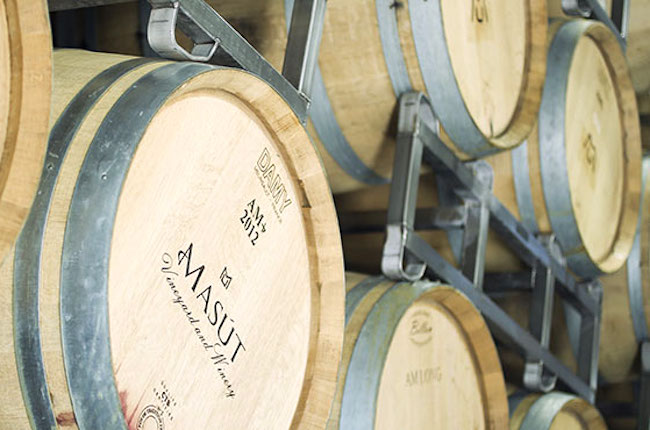
masut-pinot-noir-barrels-2

masut-pinot-noir-fetzer-bros-bw-2
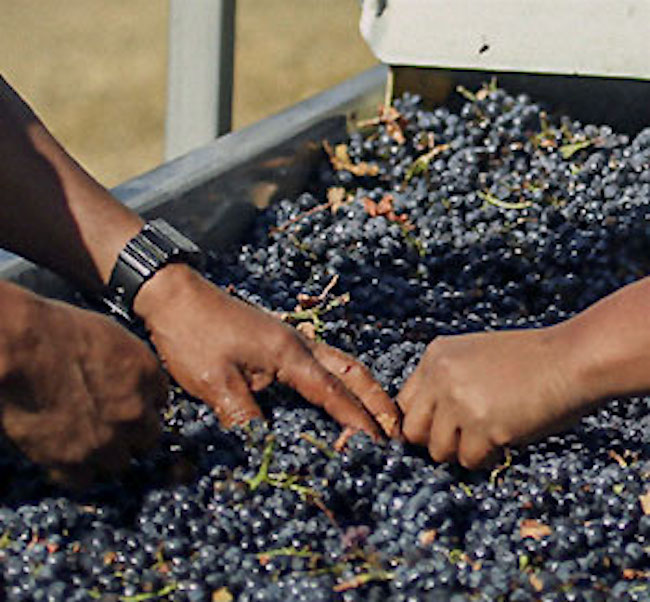
side1_color
With our thoughts turning to all the delights of Fall, pumpkin spice lattes, butternut squash bisque and cozy cashmere sweaters (*swoon*), it is with great pleasure that I introduce our latest #WineWednesday Wine of the Week: the 2014 Masút Pinot Noir Eagle Peak Estate Vineyard from Mendocino, California.Pinot Noir is undoubtedly the patron red grape of Fall. Its lighter body and savory, earthy fruit flavors provide a nice transition from the light whites and rosés of Summer. It also pairs incredibly well with many of your favorite Fall dishes - more on that later! While Burgundy, France is the birthplace of this revered grape, many of you may also be smitten with the plethora of delicious CaliforniaPinot Noir options available. If so, I think you will enjoy this delightful incarnation from Mendocino, located approximately 3 hours from San Francisco and about as far north in California wine country as you can get.The 2014 Masút Pinot Noir hails from the estate vineyards of a well known winemaking family and offers oodles of Pinot Noir deliciousness including black and red cherry fruit flavors, a delightful earthiness and satisfying, food-friendly acidity which make it a fabulous companion at the table. Please read on for all the deets and I hope you enjoy this week's selection. Also, feel free to share it on Twitter (don't forget to add #WineWednesday) or save to your fave Pinterest board using the tags located in the upper left corner of each photo!Who it's from: The MasútWinery was founded in 2009 by Jake and Ben Fetzer, sons of the late Bobby Fetzer, one of Medocino's best known winemakers. The brothers grew up in the vineyards of Mendocino following in their father's footsteps. In 1994, Fetzer purchased a 1200 acre property in Mendocino and named it Masút, a Native American word meaning “dark, rich earth.” He was intrigued with the hillside site of fast draining soil, desirable sun exposure and marine influenced winds and his goal was to grow the finest Pinot Noir possible. Unfortunately, in 2006 Fetzer passed suddenly in a tragic rafting accident. Despite his untimely passing, the brothers forged onward in memory of their father to produce their "small batch" MasútPinot Noir which debuted in 2011.Where it's from: Eagle Peak is located in the coastal mountains of Mendocino County. In October of 2014, the location was recognized as its own American Viticultural Area as Eagle Peak, Mendocino County. It is comprised of 26,260 acres which are marked by coastal afternoon breezes, elevations ranging from 800-3,000 feet and a cornucopia of microclimates. The Eagle Peak AVA also has substantial diurnal shifts, the variation between high and low temperatures occurring in a specific location during the same day, which are essential for producing prime Pinot Noir. It's thin, well-drained soils are also ideal for growing the finicky Pinot Noir grape. These conditions allow the Fetzers to grow truly expressive and unique Pinot Noir grapes.Wine by the (Geeky) Numbers:Vineyard Blocks - 6, 7, 12, 13, 14Pinot Noir clones - 115(50%), 23(33%), 777(17%)Rootstock - 101-14MG, 44-53MYields - 2.9 tons/acreHarvest Dates - Sept 4th-10thCooperage - French Oak (50% new)Aging - 15 months Sur lie (click here for more info)Bottling - Unfiltered (click here for more info)Production - 1,800 casesThe Glamorous Gourmet's Tasting Note: This medium-bodied, garnet red wine displays fragrant aromas of black and red fruit and earth. On the palate, flavors of raspberry pastille, spiced cherry and dusty earth accompany a bright, food friendly acidity. Youthful, chewy tannins are well balanced and follow through on the lengthy, mineral-tinged finish.Pair it with: This delightful Pinot is incredibly versatile at the table and will pair beautifully with many of your Fall favorites such as succulent roast chicken and hearty soups and stews. Here on the blog, I highly recommend pairing this wine with some of our favorite recipes including: Quick Coq au Vin, Rosemary Roasted Chicken with Mushrooms & Caramelized Onions and Roasted Chicken, Sage, Mushroom & Caramelized Onion Salad.MSRP: $45 (for purchasing information, please e-mail stephanie@theglamorousgourmet or call 561.317.6663)Cheers,
With our thoughts turning to all the delights of Fall, pumpkin spice lattes, butternut squash bisque and cozy cashmere sweaters (*swoon*), it is with great pleasure that I introduce our latest #WineWednesday Wine of the Week: the 2014 Masút Pinot Noir Eagle Peak Estate Vineyard from Mendocino, California.

Pinot Noir is undoubtedly the patron red grape of Fall. Its lighter body and savory, earthy fruit flavors provide a nice transition from the light whites and rosés of Summer. It also pairs incredibly well with many of your favorite Fall dishes – more on that later! While Burgundy, France is the birthplace of this revered grape, many of you may also be smitten with the plethora of delicious California Pinot Noir options available. If so, I think you will enjoy this delightful incarnation from Mendocino, located approximately 3 hours from San Francisco and about as far north in California wine country as you can get.
The 2014 Masút Pinot Noir hails from the estate vineyards of a well known winemaking family and offers oodles of Pinot Noir deliciousness including black and red cherry fruit flavors, a delightful earthiness and satisfying, food-friendly acidity which make it a fabulous companion at the table. Please read on for all the deets and I hope you enjoy this week’s selection. Also, feel free to share it on Twitter (don’t forget to add #WineWednesday) or save to your fave Pinterest board using the tags located in the upper left corner of each photo!

Brothers Ben & Jake Fetzer
Who it’s from: The Masút Winery was founded in 2009 by Jake and Ben Fetzer, sons of the late Bobby Fetzer, one of Medocino’s best known winemakers. The brothers grew up in the vineyards of Mendocino following in their father’s footsteps. In 1994, Fetzer purchased a 1200 acre property in Mendocino and named it Masút, a Native American word meaning “dark, rich earth.” He was intrigued with the hillside site of fast draining soil, desirable sun exposure and marine influenced winds and his goal was to grow the finest Pinot Noir possible. Unfortunately, in 2006 Fetzer passed suddenly in a tragic rafting accident. Despite his untimely passing, the brothers forged onward in memory of their father to produce their “small batch” Masút Pinot Noir which debuted in 2011.

Sorting the freshly harvested Pinot Noir grapes!
Where it’s from: Eagle Peak is located in the coastal mountains of Mendocino County. In October of 2014, the location was recognized as its own American Viticultural Area as Eagle Peak, Mendocino County. It is comprised of 26,260 acres which are marked by coastal afternoon breezes, elevations ranging from 800-3,000 feet and a cornucopia of microclimates. The Eagle Peak AVA also has substantial diurnal shifts, the variation between high and low temperatures occurring in a specific location during the same day, which are essential for producing prime Pinot Noir. It’s thin, well-drained soils are also ideal for growing the finicky Pinot Noir grape. These conditions allow the Fetzers to grow truly expressive and unique Pinot Noir grapes.
Wine by the (Geeky) Numbers:
Vineyard Blocks – 6, 7, 12, 13, 14
Pinot Noir clones – 115(50%), 23(33%), 777(17%)
Rootstock – 101-14MG, 44-53M
Yields – 2.9 tons/acre
Harvest Dates – Sept 4th-10th
Cooperage – French Oak (50% new)
Aging – 15 months Sur lie (click here for more info)
Bottling – Unfiltered (click here for more info)
Production – 1,800 cases
The Glamorous Gourmet’s Tasting Note: This medium-bodied, garnet red wine displays fragrant aromas of black and red fruit and earth. On the palate, flavors of raspberry pastille, spiced cherry and dusty earth accompany a bright, food friendly acidity. Youthful, chewy tannins are well balanced and follow through on the lengthy, mineral-tinged finish.
Pair it with: This delightful Pinot is incredibly versatile at the table and will pair beautifully with many of your Fall favorites such as succulent roast chicken and hearty soups and stews. Here on the blog, I highly recommend pairing this wine with some of our favorite recipes including: Quick Coq au Vin, Rosemary Roasted Chicken with Mushrooms & Caramelized Onions and Roasted Chicken, Sage, Mushroom & Caramelized Onion Salad.
MSRP: $45 (for purchasing information, please e-mail stephanie@theglamorousgourmet or call 561.317.6663)
Cheers,
![]()
The post #WineWednesday Wine of the Week: 2014 Masút Pinot Noir Eagle Peak, Mendocino, CA appeared first on The Glamorous Gourmet.
After recently dining at The Ordinary in Charleston, South Carolina, I'd have to say Chef Mike Lata's "fancy" oyster bar and seafood hall is nothing short of - EXTRAordinary! Ensconced in an historic bank building with soaring ceilings and quaint architectural details, we were smitten by this charming eatery. Every aspect of our experience made it abundantly clear why the restaurant garnered a coveted James Beard Award nomination for Best New Restaurant in 2013.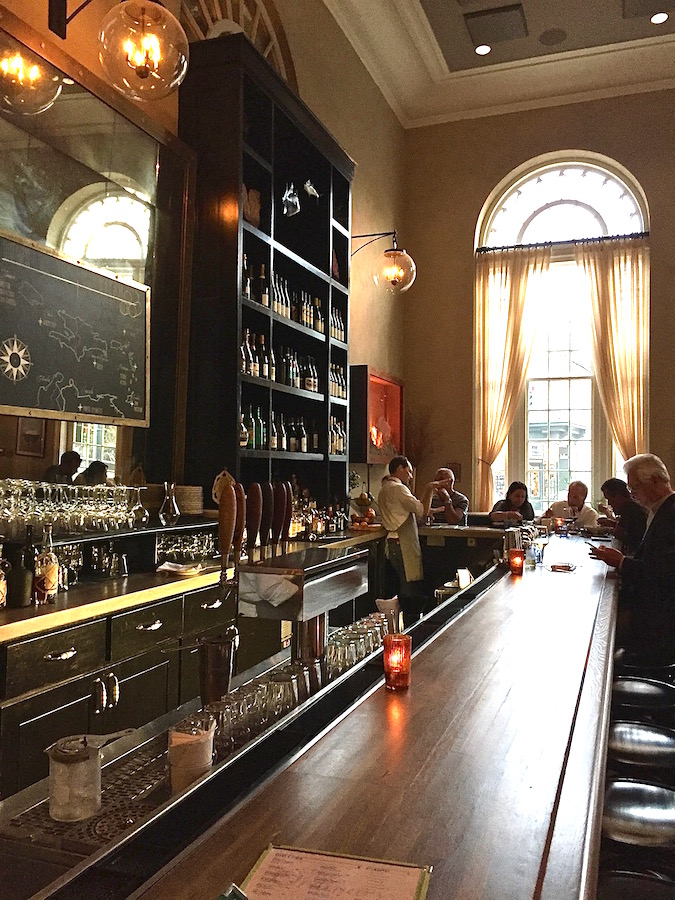 Awarded "Best Chef Southeast" by the James Beard Foundation in 2009, Chef Lata is widely considered a pioneer of Charleston's vibrant culinary scene. His first establishment, FIG (short for "Food Is Good"), which he opened in 2003 with partner Adam Nemirow, set Charleston's culinary bar high. While FIG celebrates the bounty of the Lowcountry, The Ordinary pays homage to the "merroir" (the oceanic version of "terroir") of the coastal Carolinas. Using unique types of seafood in inventive, yet not highly manipulative preparations is an intrinsic part of the not-so-ordinary experience.
Awarded "Best Chef Southeast" by the James Beard Foundation in 2009, Chef Lata is widely considered a pioneer of Charleston's vibrant culinary scene. His first establishment, FIG (short for "Food Is Good"), which he opened in 2003 with partner Adam Nemirow, set Charleston's culinary bar high. While FIG celebrates the bounty of the Lowcountry, The Ordinary pays homage to the "merroir" (the oceanic version of "terroir") of the coastal Carolinas. Using unique types of seafood in inventive, yet not highly manipulative preparations is an intrinsic part of the not-so-ordinary experience.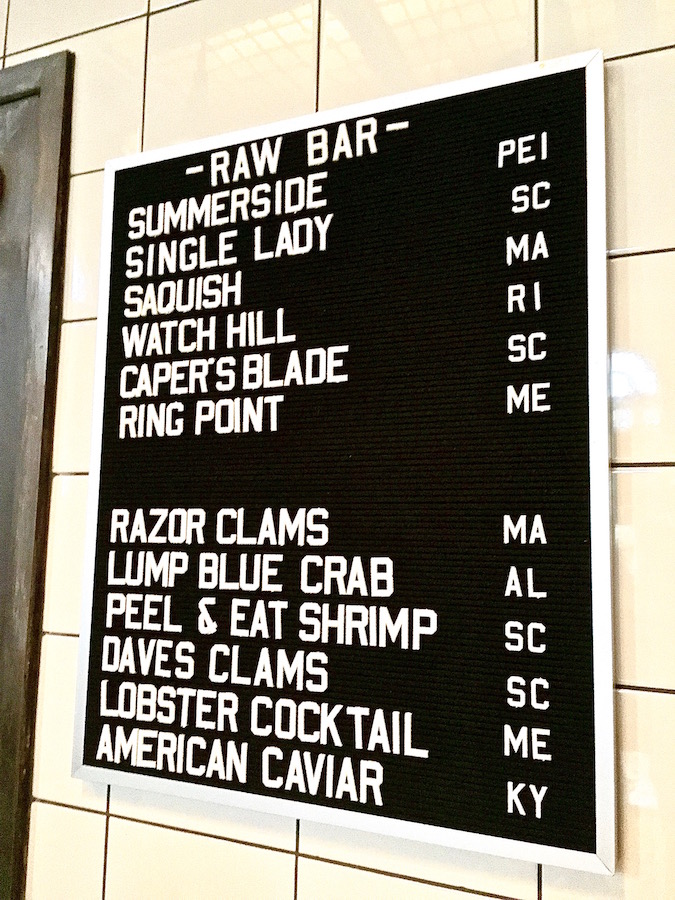
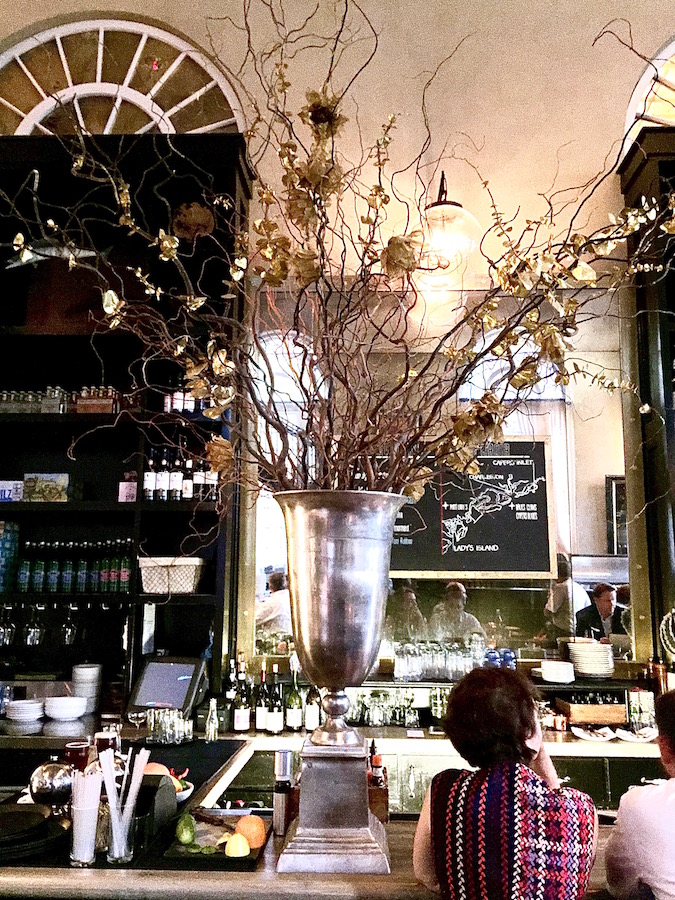 In addition to the fabulous coastal cuisine, another highlight at The Ordinary is its spectacular staff. Although we made reservations in advance, we decided to dine at the bar (highly recommend!) and our team of bartenders/servers expertly guided us through the menu and wine list. These passionate ambassadors made exploring the menu a delightful adventure, recommending delectable dishes including savory Smoked Oysters with Saltines and Hot Sauce, a fresh and flavorful Porgy Ceviche with Avocado and Cucumber, heavenly Steak Tartare with Crispy Oysters & Horseradish and peel and eat BBQ White Shrimp (worth the mess!) served with charred bread to sop up all the heavenly sauce. Since I'm not a fan of raw oysters, Steve "volunteered" to knock back a sampling of these coastal gems which were exceptional!
In addition to the fabulous coastal cuisine, another highlight at The Ordinary is its spectacular staff. Although we made reservations in advance, we decided to dine at the bar (highly recommend!) and our team of bartenders/servers expertly guided us through the menu and wine list. These passionate ambassadors made exploring the menu a delightful adventure, recommending delectable dishes including savory Smoked Oysters with Saltines and Hot Sauce, a fresh and flavorful Porgy Ceviche with Avocado and Cucumber, heavenly Steak Tartare with Crispy Oysters & Horseradish and peel and eat BBQ White Shrimp (worth the mess!) served with charred bread to sop up all the heavenly sauce. Since I'm not a fan of raw oysters, Steve "volunteered" to knock back a sampling of these coastal gems which were exceptional!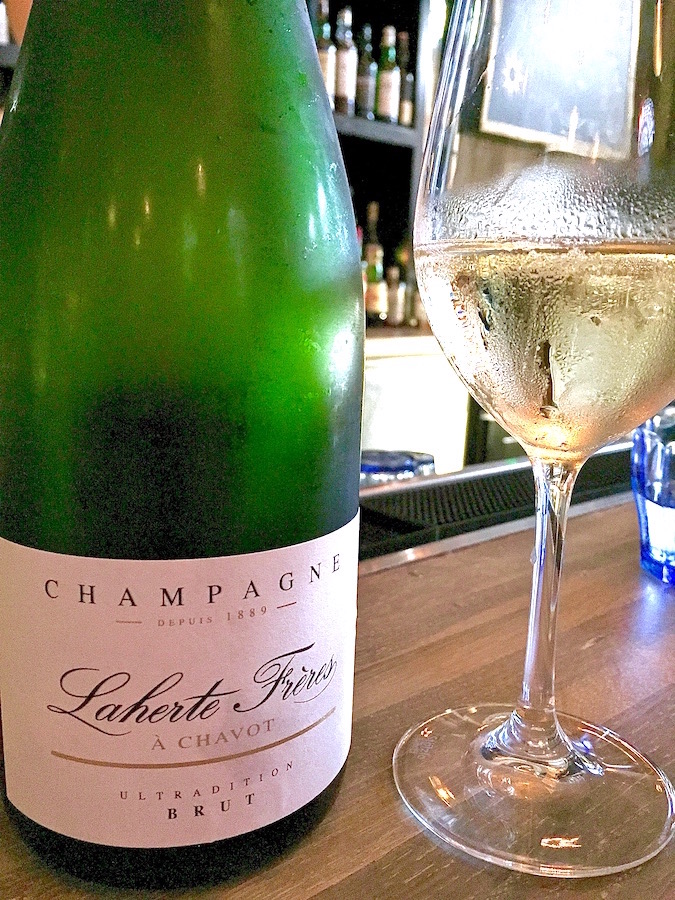
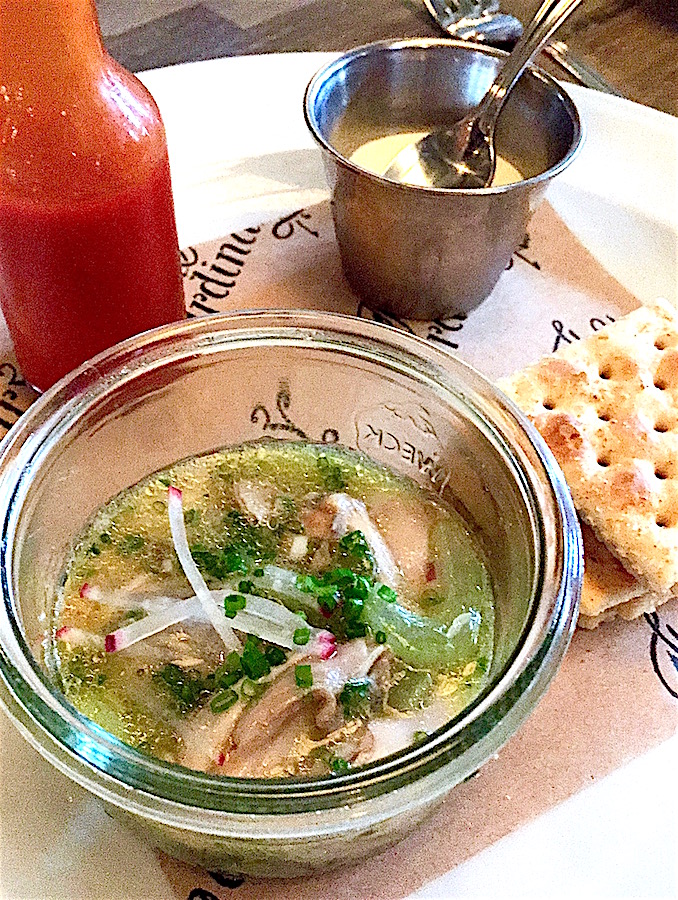 On par with The Ordinary's passion for coastal cuisine is their enthusiasm for wine. The wine list offers a wide range of offerings from around the globe specifically selected to complement the menu. But, if you're looking for your usual Chardonnay or Cabernet Sauvignon, you're not going to find it here. The Ordinary is definitely the place to go for vinous exploration featuring esoteric selections including a sparkling German Sekt, a Corsican red blend of Sciaccarello and Nielluccio and entire sections devoted to Pink & Orange wines and Sherry. The list is rounded out nicely by a selection of delicious craft cocktails, daiquiris, vermouths, beers and ciders as well as 31 different types of rum from five countries.
On par with The Ordinary's passion for coastal cuisine is their enthusiasm for wine. The wine list offers a wide range of offerings from around the globe specifically selected to complement the menu. But, if you're looking for your usual Chardonnay or Cabernet Sauvignon, you're not going to find it here. The Ordinary is definitely the place to go for vinous exploration featuring esoteric selections including a sparkling German Sekt, a Corsican red blend of Sciaccarello and Nielluccio and entire sections devoted to Pink & Orange wines and Sherry. The list is rounded out nicely by a selection of delicious craft cocktails, daiquiris, vermouths, beers and ciders as well as 31 different types of rum from five countries.
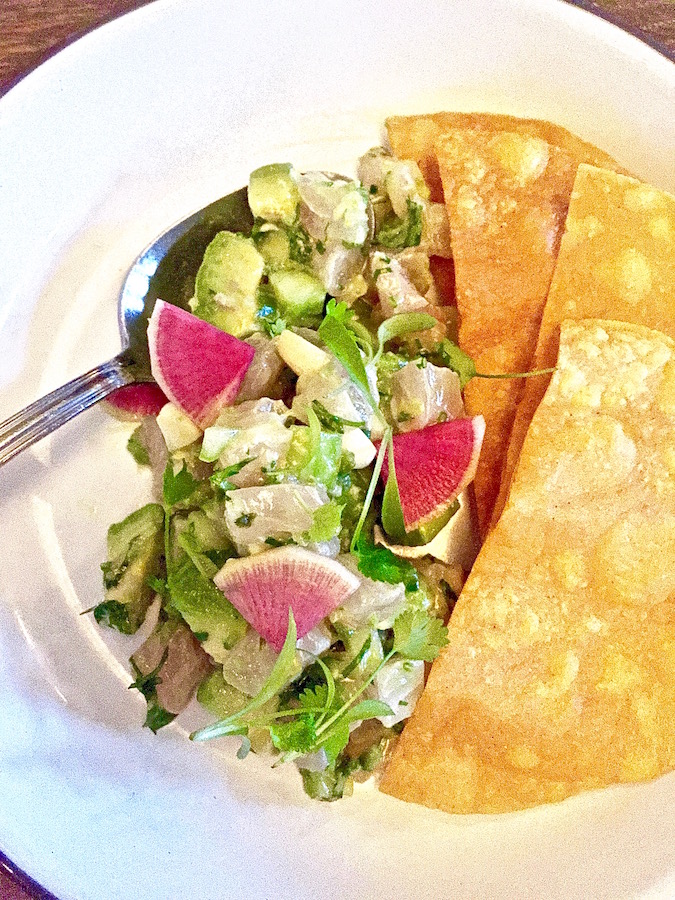
 We started with their stellar Champagne by the glass, the Laherte Frères Ultradition Brut. It was crisp and vibrant with a refreshing minerality - the perfect choice to prime our palates! We continued to sample a variety of wines with our delicious dishes including another bubbly, the frothy, fresh Albert Mann Cremant d'Alsace, as well as the 2015 Dirty & Rowdy "Familiar Blanc," a quirky white blend from California. A citrusy Chenin Blanc from the Loire's Château de Fosse-Sèche rounded out the whites before we sampled our only red wine of the night, a 2014 Domaine de la Pinte Poulsard "Pinte Bien." You see, red wines are in the minority at The Ordinary, outnumbering reds 25 to 10. Given this extraordinary seafood-focused menu - it totally works!
We started with their stellar Champagne by the glass, the Laherte Frères Ultradition Brut. It was crisp and vibrant with a refreshing minerality - the perfect choice to prime our palates! We continued to sample a variety of wines with our delicious dishes including another bubbly, the frothy, fresh Albert Mann Cremant d'Alsace, as well as the 2015 Dirty & Rowdy "Familiar Blanc," a quirky white blend from California. A citrusy Chenin Blanc from the Loire's Château de Fosse-Sèche rounded out the whites before we sampled our only red wine of the night, a 2014 Domaine de la Pinte Poulsard "Pinte Bien." You see, red wines are in the minority at The Ordinary, outnumbering reds 25 to 10. Given this extraordinary seafood-focused menu - it totally works!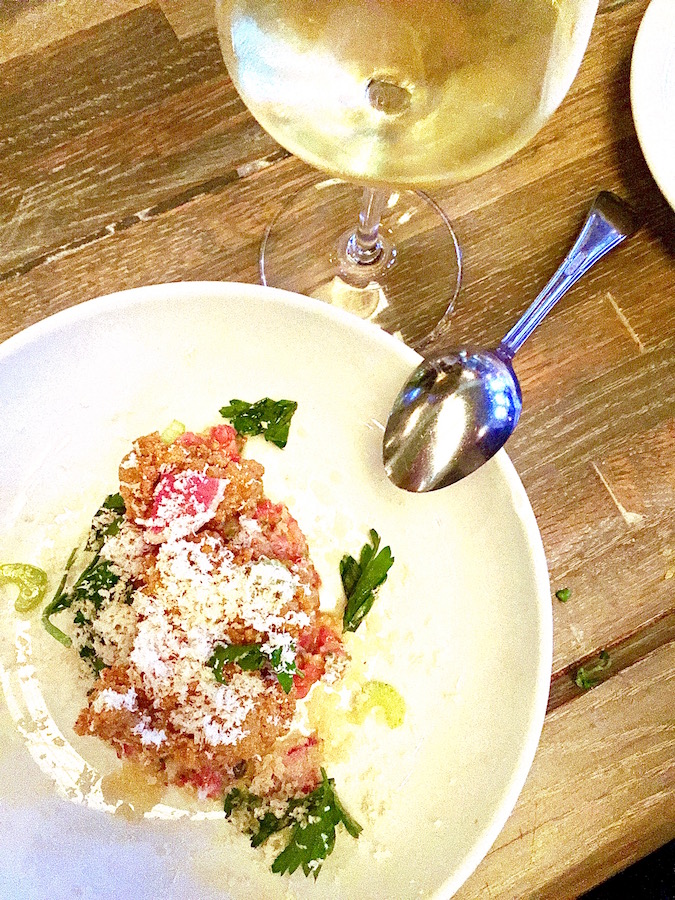
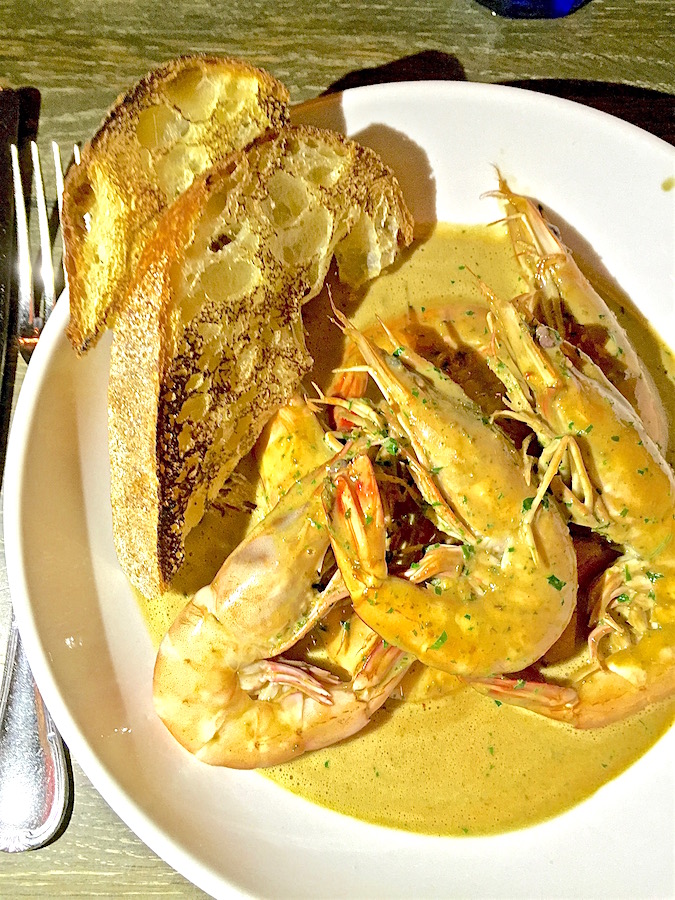 So next time you're in Charleston and hankering for an exceptional meal featuring some of South Carolina's best seafood, be sure to visit The Ordinary. I'm sure your experience will be nothing short of extraordinary.The Ordinary544 King StreetCharleston, SC843.414.7060www.eattheordinary.comCheers,
So next time you're in Charleston and hankering for an exceptional meal featuring some of South Carolina's best seafood, be sure to visit The Ordinary. I'm sure your experience will be nothing short of extraordinary.The Ordinary544 King StreetCharleston, SC843.414.7060www.eattheordinary.comCheers,
After recently dining at The Ordinary in Charleston, South Carolina, I’d have to say Chef Mike Lata’s “fancy” oyster bar and seafood hall is nothing short of – EXTRAordinary! Ensconced in an historic bank building with soaring ceilings and quaint architectural details, we were smitten by this charming eatery. Every aspect of our experience made it abundantly clear why the restaurant garnered a coveted James Beard Award nomination for Best New Restaurant in 2013.

The inviting bar at The Ordinary
Awarded “Best Chef Southeast” by the James Beard Foundation in 2009, Chef Lata is widely considered a pioneer of Charleston’s vibrant culinary scene. His first establishment, FIG (short for “Food Is Good”), which he opened in 2003 with partner Adam Nemirow, set Charleston’s culinary bar high. While FIG celebrates the bounty of the Lowcountry, The Ordinary pays homage to the “merroir” (the oceanic version of “terroir”) of the coastal Carolinas. Using unique types of seafood in inventive, yet not highly manipulative preparations is an intrinsic part of the not-so-ordinary experience.


In addition to the fabulous coastal cuisine, another highlight at The Ordinary is its spectacular staff. Although we made reservations in advance, we decided to dine at the bar (highly recommend!) and our team of bartenders/servers expertly guided us through the menu and wine list. These passionate ambassadors made exploring the menu a delightful adventure, recommending delectable dishes including savory Smoked Oysters with Saltines and Hot Sauce, a fresh and flavorful Porgy Ceviche with Avocado and Cucumber, heavenly Steak Tartare with Crispy Oysters & Horseradish and peel and eat BBQ White Shrimp (worth the mess!) served with charred bread to sop up all the heavenly sauce. Since I’m not a fan of raw oysters, Steve “volunteered” to knock back a sampling of these coastal gems which were exceptional!

We looooved their Champagne by the glass!

Smoked Oysters with Hot Sauce = DIVINE!
On par with The Ordinary’s passion for coastal cuisine is their enthusiasm for wine. The wine list offers a wide range of offerings from around the globe specifically selected to complement the menu. But, if you’re looking for your usual Chardonnay or Cabernet Sauvignon, you’re not going to find it here. The Ordinary is definitely the place to go for vinous exploration featuring esoteric selections including a sparkling German Sekt, a Corsican red blend of Sciaccarello and Nielluccio and entire sections devoted to Pink & Orange wines and Sherry. The list is rounded out nicely by a selection of delicious craft cocktails, daiquiris, vermouths, beers and ciders as well as 31 different types of rum from five countries.



We started with their stellar Champagne by the glass, the Laherte Frères Ultradition Brut. It was crisp and vibrant with a refreshing minerality – the perfect choice to prime our palates! We continued to sample a variety of wines with our delicious dishes including another bubbly, the frothy, fresh Albert Mann Cremant d’Alsace, as well as the 2015 Dirty & Rowdy “Familiar Blanc,” a quirky white blend from California. A citrusy Chenin Blanc from the Loire’s Château de Fosse-Sèche rounded out the whites before we sampled our only red wine of the night, a 2014 Domaine de la Pinte Poulsard “Pinte Bien.” You see, red wines are in the minority at The Ordinary, outnumbering reds 25 to 10. Given this extraordinary seafood-focused menu – it totally works!

Steak Tartare with Crispy Oysters – YUM!!!

The peel & eat BBQ White Shrimp were TOTALLY worth the effort!
So next time you’re in Charleston and hankering for an exceptional meal featuring some of South Carolina’s best seafood, be sure to visit The Ordinary. I’m sure your experience will be nothing short of extraordinary.
The Ordinary
544 King Street
Charleston, SC
843.414.7060
www.eattheordinary.com
Cheers,
![]()
The post Chef Mike Lata’s “The Ordinary” in Charleston, South Carolina is Anything But! appeared first on The Glamorous Gourmet.